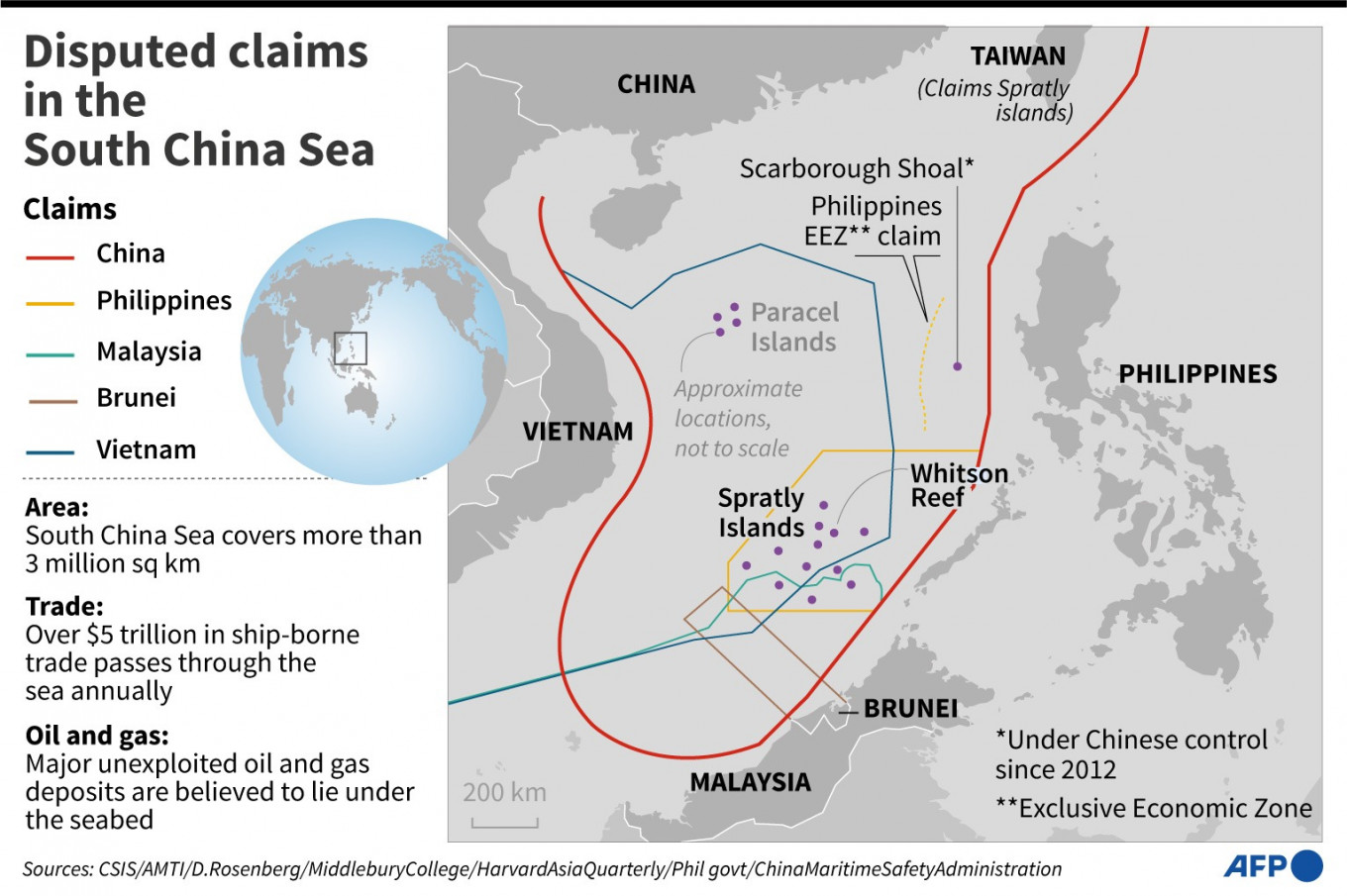By: Hamna Shabbir

South China Sea’s complex security landscape is a riddle that requires vigilant analysis and navigation to gain regional stability. The SCS is a crucial waterway for global trade, with over $3 trillion in annual shipments passing through its strategic channels used by Southeast Asian, Chinese, and Indian civilizations. This region has many claimants including China, Vietnam, Taiwan, Brunei, Malaysia, and the Philippines, all of which contend its territorial claims. Due to these conflicting claims, this area is a hub of tensions. These rising tensions are often grounded on historical assertions, geographical proximity, and economic interests, leading to a complex and sometimes volatile security landscape. To mitigate risks and promote regional stability, nations must engage in constructive diplomacy and it is also necessary for the global economy. As the world’s most critical waterway, the South China Sea is a geopolitical powder keg that commands surveillance and diplomacy.
The South China Sea borders the Pacific Ocean on the west and connects to the Southeast Continental Asia. The Taiwan Strait is on the northeast, which bonds it to the East China Sea. Southeastern and southern borders are shared with Borneo, eastern Sumatra, the Eastern seaboard of the Malay Peninsula, and the southernmost reaches of the Gulf of Thailand. The islands of Taiwan are on the east and the Philippines bounds it to the northwest. Continental Asia is located to the north and west. The East China Sea and the South China Sea collectively constitute the China Sea. The region encompasses approximately 1.4 Million square miles, with an average depth of 3,976 feet. Several countries claim the sovereignty of the South China Sea Islands, encompassing multiple archipelago amassment of mainly small uninhabited islands, reefs/atolls, seamounts, and islets numbering in the hundreds. SCS has rich reservoirs of oil and natural gas. It is rich in marine life and also provides livelihood to millions of people in that region. In the South China Sea, a large number of global marine fishing fleets are in operation.
In the South China Sea, countries have squabbled over territory for centuries but over the past few years, this feud has become the cause of growing tensions in this region. China has major claims on the sovereignty of land parcels and their adjacent waters but these claims didn’t go unnoticed by the other claimants like Taiwan, Malaysia, Vietnam, Brunei, and the Philippines. Many countries also claim Paracels and Spratly Islands. These Paracels and Spratly Islands are no doubt uninhabited but they also have reserves of natural resources. China demands absolute economic and military rights in the substantial area of the South China Sea. China and Taiwan both contend that the South China Sea represents “Historical Waters”. They assert that the Paracel and Spratly Islands were regarded as an integral part back in history. China and Taiwan made a U-shaped line that consists of nine to 11 dashes that assert sovereignty over a vast majority (around 90%) of the South China Sea and this line is called as “nine-dash line” (also called an “eleven-dash line” by Taiwan). But this line is vague as it doesn’t explain the true nature of the claims made by China and Taiwan.
Vietnam, Malaysia, the Philippines, and Brunei were affected by these claims of China but later on US and other claimants from far regions started to take part in the disputes of the South China Sea. According to Indonesian policy, they remain neutral in regional disputes but China has triggered Indonesia by trespassing in their exclusive economic zones (EEZ). Indonesia has exclusive rights to fishing and also on other resources within 200 nautical miles (370km) of its coastline by the United Nations Convention on the Law of the Sea (UNCLOS). The other claimant Vietnam says that the historical claims of China are trumped up as China only started to claim these islands in the 1940s. Vietnam argues that since the 17th century, it has governed and ruled over the Paracel and Spratly Islands and asserts that they have proper documentary evidence to prove its sovereignty over these zones. The Philippines also shares a border with SCS and due to their proximity, it also claims a part of the Spratly Islands. China and the Philippines both claim the same zone Scarborough Shoal, and it is situated at a distance of five hundred miles from China but only a hundred miles from the Philippines. The South China Sea is subject to overlapping territorial claims by Malaysia and Brunei, whose EEZs overlap with China’s claims, as designated by UNCLOS. Specifically, Brunei doesn’t claim any island but Malaysia claims a few of the Spratly islands.
The United States wants the South China Sea’s passageway to be free and open by stopping the encroachments and control of China over SCS. It is also important for the global economy and to uphold the global rule of freedom of navigation. The US and China might get involved in a military conflict due to their power struggle. China’s sweeping claims over the waterway will push the US out of the Indo-Pacific region, increasing China’s economic influence in world trade and the power will go into the hands of China. So, the whole focus of the US military has shifted toward the Indo-Pacific Ocean. China’s encroachment in the South China Sea has angered the other claimants and has urged them to bend towards the other superpower US to protect their national interest in the Pacific region. The United States chose to maintain neutrality and does not claim its sovereignty over any region of SCS. However, the US tries to restrain China’s actions to support its allies in the region. The US has also promised its support to its old ally Philippines to ensure harmony in the South China Sea. The US forged alliances with the ASEAN countries (Thailand, the Philippines, Singapore, Indonesia, Malaysia, Brunei, Laos, Vietnam, Cambodia, and Myanmar). It also allied with AUKUS (including the United Kingdom and Australia) and signed quadrilateral security dialogues with Australia India, and Japan.
China believes that bilateral talks between other claimants will be the best solution for this problem. But as China is a superpower so according to its neighboring countries this gives China an unfair advantage in their eyes. Other nations think that China should negotiate with ASEAN countries but China opposes this idea while ASEAN also thinks that this is not the proper solution for these disputes. The Philippines seeks international help in this matter instead of negotiations with China. In 2013 Philippines presented its case in the UN Convention on the Law of Sea to challenge China’s sweeping claims. In July 2016 the jurisdiction adjudicated in support of the Philippines saying that China was violating laws by threatening the Philippines’ sovereign rights. But China boycotted that ruling saying it is baseless and ill-founded and does not take part in this.
To ensure a peaceful environment and prosperous future for the region all the claimants should work together to navigate the complexities of the South China Sea. International support and mediation should be encouraged to resolve disputes peacefully. A multilateral framework involving all claimants and regional stakeholders should be established. Joint development zones for shared resource management and benefit-sharing should be created to solve the dispute.
The writer is a student of International Relations. She can be reached at [email protected]



